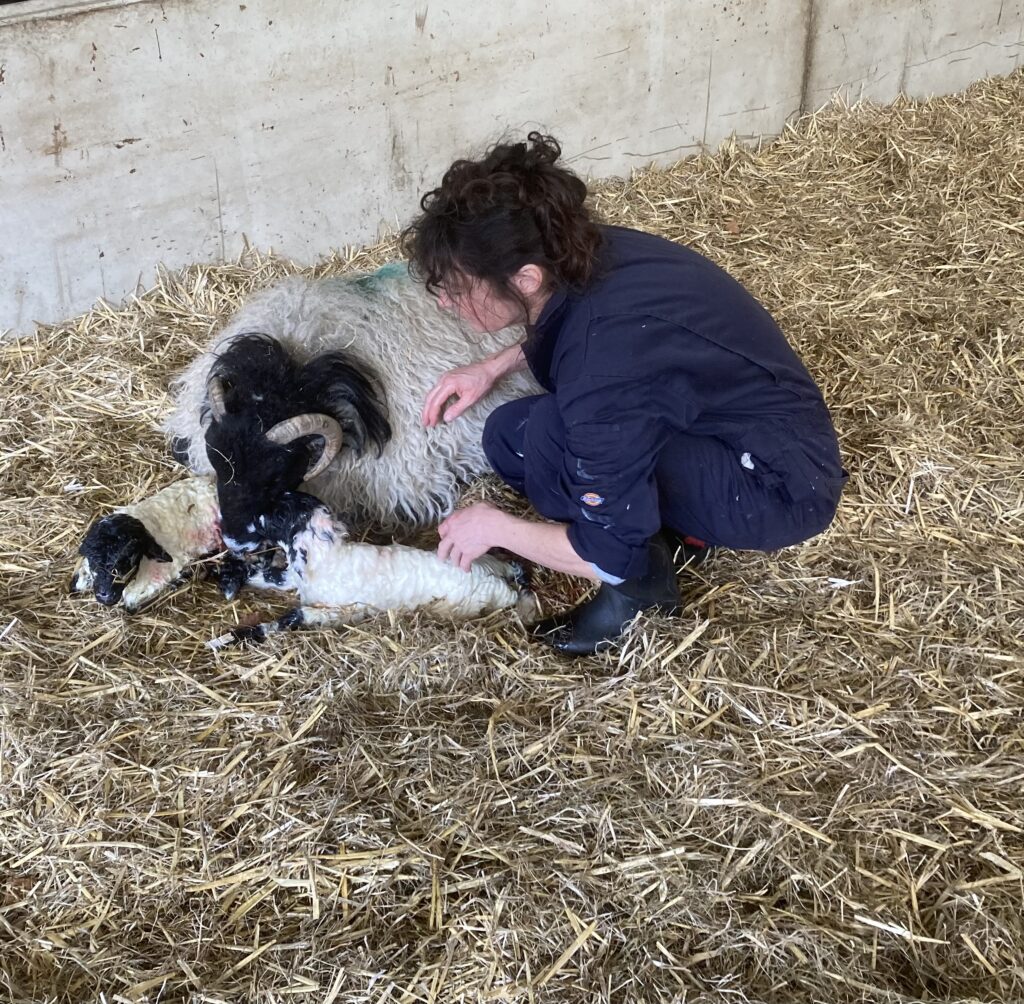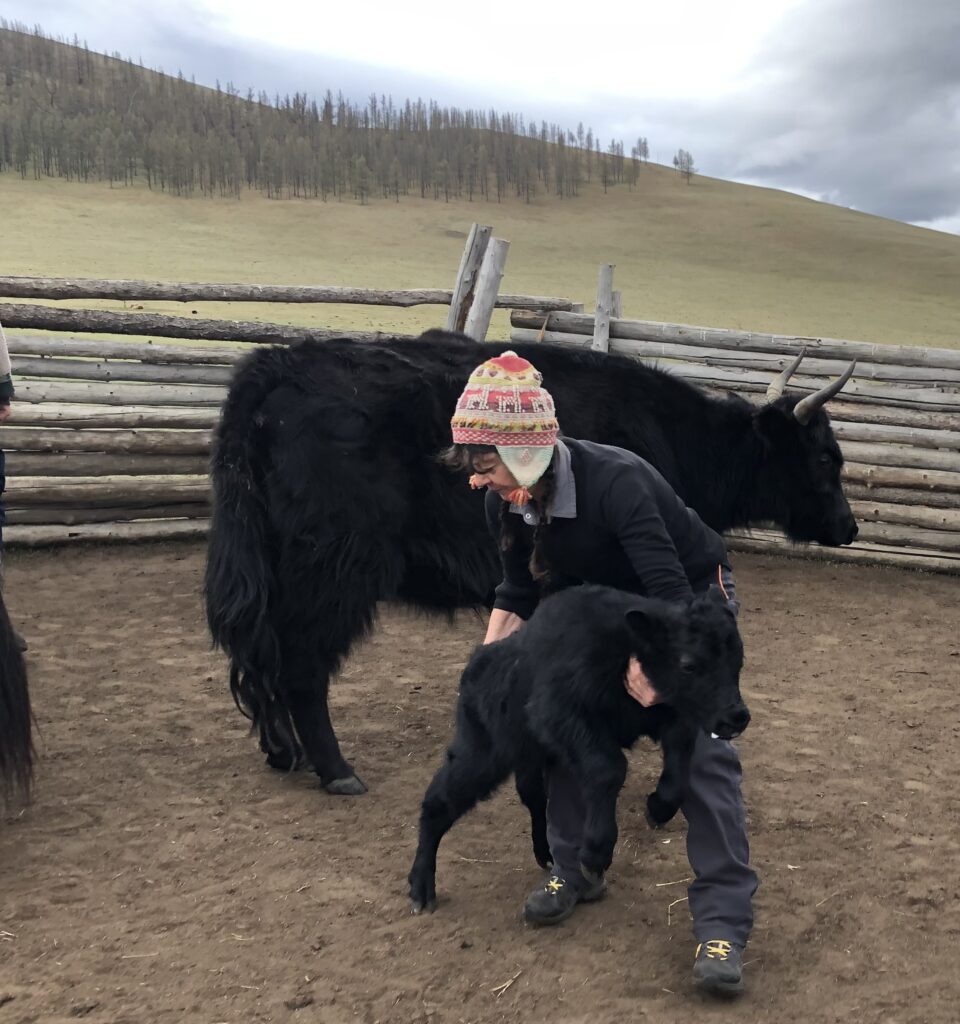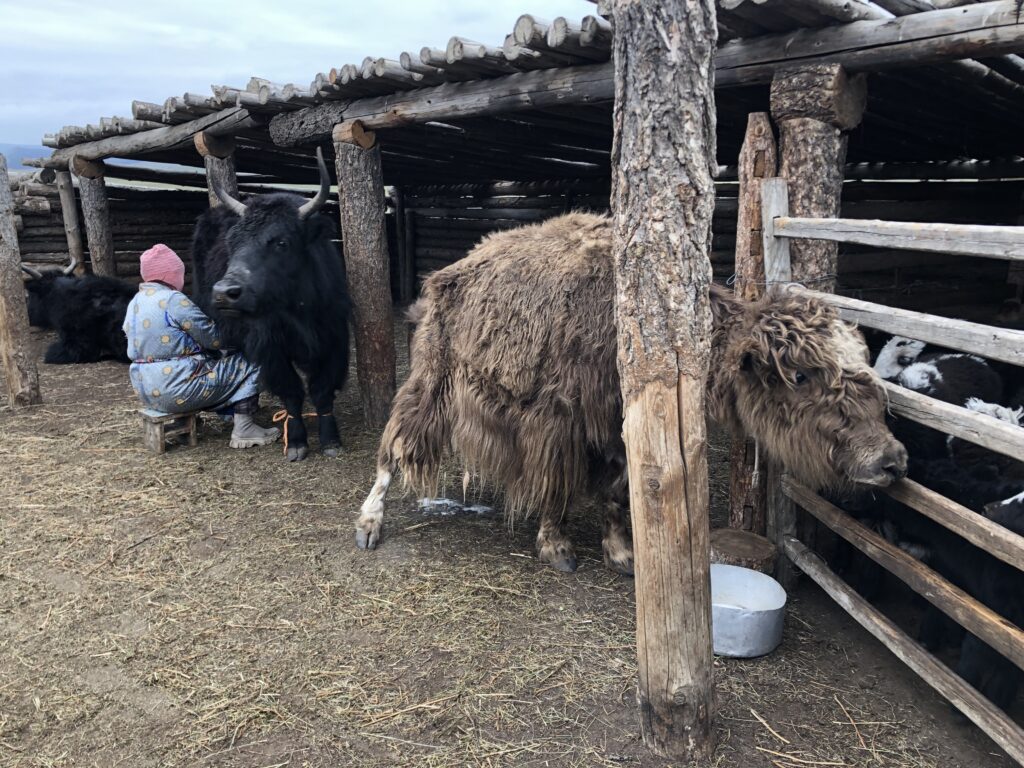Catherine Simmons
Art and farming have always been part of my life. I grew up helping on hill farms in the Yorkshire Dales and later worked on upland farms for many years, keeping a few sheep of my own. During that time, I learned to spin, dye with natural colours, weave, and knit, mainly for my own enjoyment and to wear the wool from my small flock.
As the years went on, the demand and price for wool dropped sharply, especially for the coarse-fibred upland breeds that are such an important part of the Dales’ landscape and heritage. Witnessing this decline made me reflect on the delicate balance between farmers, livestock, and the natural forces of weather and land.


My journey took me further afield. In Morocco, I worked with a shepherd in the Atlas Mountains, following the flock each day and shearing with traditional hand shears. Later, in Mongolia, I spent time with nomadic herders on the steppe, my first encounter with yak. Each spring, one of my tasks was to comb the yaks as they shed their soft undercoat, or khullu, beneath their long, protective guard hairs. This luxurious fibre, similar to cashmere, is carefully gathered and provides an important source of income for the herders.

Although I spoke only around twenty words of Mongolian, our shared experience of working with and caring for livestock became our common language. I was impressed by how the nomadic herders, despite the distances between them, had formed a cooperative to maximise the value of their fibre and sell it at a fair price.
Returning to Yorkshire for shearing, I noticed the fleeces of the Bluefaced Leicester rams. Their fineness and softness reminded me of khullu. Bluefaced Leicester wool is a lustrous, soft fibre, non-itchy and luxurious, but each farm only has two or three sheep of this breed. As a result, the wool is usually packed with the coarse fleeces of upland ewes, which have little commercial value.
This brought me back to Mongolia and how herders had found ways to make the most of their yak fibre. I realised the same could be done here, but farmers are too busy farming to take it on. That someone became me.
And so Khullu + Leicester was born to celebrate the beauty of yak khullu and buy fibre directly from the herders to support their cooperative, to help hill farmers in my own community by purchasing their Leicester wool at a fair price, and to return to the artistic skills of spinning, dyeing, and weaving that I had once put aside while working as a painter and decorator.

